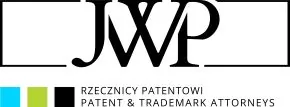- within Intellectual Property topic(s)
- in Europe
- in Europe
- in Europe
- in Europe
- within Technology topic(s)
In the cosmetics and hygiene industry, where innovation and product quality are of key importance, cosmetic textiles are becoming a dynamically developing market segment. Products such as reusable make-up removal pads, specialized towels, masks soaked with active substances or medical textiles are becoming more popular with professionals and consumers. Diversity and their technological potential of this type of products may be the key to success for manufacturers, due to the growing needs and expectations of consumers of the beauty market.
Diversity of cosmetic textiles
Cosmetic textiles cover a wide range of products, from simple disposables to technologically advanced reusable fabrics. The following products are available on the market:
- textile masks – for the application of moisturizing and nourishing substances.
- cosmetic pads – for make-up removal and skin cleansing.
- therapeutic fabrics – supporting wound healing or skin regeneration.
- microfiber towels – for effective drying and cleansing of the skin.
The diversity of materials used to make cosmetic textiles provides the opportunity to adapt them to different needs. Microfiber with high water absorption is ideal for drying the skin, while organic cotton works well for sensitive skin prone to allergies. Modern synthetic materials, such as polymers with antibacterial properties, increase the functionality of cosmetic textiles, especially in the context of hygiene and prevention of skin infections.
Skin problems and cosmetic textiles
Scientific research indicates that various skin problems, such as acne, eczema or psoriasis, can be effectively supported by innovative cosmetic textiles. In the case of acne skin, antibacterial materials used in cosmetic pads may limit the growth of bacteria responsible for the formation of pimples. Textiles soaked with active substances, e.g. salicylic acid, additionally support the treatment process.
In the case of eczema, research focuses on therapeutic textiles made of materials with soothing and moisturizing properties. For example, fabrics soaked in emollients or barrier lipids can reduce irritation and support the regeneration of damaged skin.
In turn, textiles dedicated to dry skin, such as textile masks soaked in hyaluronic acid, effectively improve the hydration and elasticity of the epidermis. Thanks to the encapsulation technologies of the active ingredients, the moisturizers can be gradually released, which provides a long-lasting care effect.
Innovative technologies, such as the addition of silver nanoparticles to textiles, support the treatment of inflammation and skin infections. Thanks to its antiseptic properties, nanoparticles prevent the multiplication of bacteria and viruses, which makes such textiles ideal in the treatment of problem skin.
What are cosmetic textiles?
Cosmetic textiles are a wide group of products that support daily care and specialized cosmetic and medical treatments. These can include disposables such as facial pads, masks and bandages as well as reusable solutions such as microfibre towels or cosmetic applicators. Depending on the application, these textiles may be soaked with active substances, equipped with antibacterial properties or providing additional effects, such as peeling or skin regeneration.
Innovative solutions protected by patent law
Disposable cosmetic pad (PL 72993 Y1)
This innovative product is made of polymeric plastics with a unique
loop structure, which gives it properties superior to traditional
disposable cosmetic pads. A key feature of the pad is the specially
designed section of threads, which effectively removes impurities
from the skin surface without the need for detergents. Thanks to
this, it minimizes the risk of irritation, which is especially
important for people with sensitive skin prone to allergies. The
pad is not only eco-friendly – reducing the consumption of
disposable hygiene materials – but also responds to the
growing environmental awareness of consumers. The product is
perfect for everyday care, especially for people who prefer natural
and gentle methods of skin cleansing.
Cosmetic mask (PL 238270 B1)
This mask has been designed for maximum comfort of use and
increased efficiency. Thanks to the use of flexible materials and
perforations that allow air to flow, the mask precisely adapts to
the shape of the face, eliminating the problem of folds or
irregularities that could affect the effectiveness of the
application of active substances. This solution is dedicated to
moisturizing and nourishing treatments, in which the even adhesion
of the mask ensures better absorption of active ingredients through
the skin. This product is also distinguished by its aesthetic
performance and the possibility of repeated use, which makes it an
ecological alternative to traditional disposable cosmetic
masks.
Skincare fabric (EP 3737790 B1)
This advanced technological solution combines an innovative
approach to skincare with high functionality. The material has been
developed based on micro fibers undergoing a splitting process,
thanks to which it has the ability to store large amounts of water
and active substances. At the same time, this fabric cleanses the
skin and gently exfoliates dead epidermis, which makes it
particularly useful in the care of problematic skin – e.g.
with scars, discoloration or uneven structure. A unique feature is
the use of liposomes to encapsulate the active ingredients, which
increases their penetration into the skin, supporting the
regeneration process. This fabric is used not only in the cosmetic
industry, but also in the medical industry, e.g. in treatments
supporting the treatment of skin after injuries or surgeries. This
combination of science and technology guarantees the effectiveness
and safety of use.
Why is it important to protect innovation?
Patent protection in cosmetic textiles not only secures the effort and investment in the development of new products, but also supports a long-term business strategy. Thanks to patents, companies can:
- protect your innovations from being copied by competitors.
- build credibility and prestige in the industry.
- increase the attractiveness of your products for distributors and customers.
How to effectively start the patent process for innovative cosmetic textiles?
The introduction of new solutions in the cosmetics industry, especially in the area of textile materials, requires not only an innovative approach, but also effective protection of intellectual property. A patent process, if well planned, can become a key element in building a competitive advantage in the market. Here is how to go through this process step by step, taking into account the specificity of textile technologies dedicated to skin care.
The state-of-the-art examination is the foundation of success. Each patent process begins with a thorough analysis of the existing solutions, called the state of the art examination. The purpose of this analysis is to identify available technologies and assess their similarity to the new invention. The results of the prior art study help not only in assessing the chances of obtaining a patent, but also in clarifying the unique features of the invention that may form the basis of the application.
Preparation of a patent application is a stage where the details are of great importance. The patent application must accurately describe the structure, properties and application of the innovative material. The following are worth considering for cosmetic textiles:
- structure of the fibers – whether they are split, perforated fibers or contain microcapsules,
- production technologies – e.g. chemical or mechanical processes affecting the functionality of the material,
- applications – from skin cleansing to advanced care for problem areas such as scars or discolouration.
Choice of protection scope – locally or globally? This is a question that is worth asking yourself from the very beginning of your innovation work, and it is also an important step in the patent process. For cosmetic textiles, it is worth considering:
- national protection, e.g. in the country where the invention was developed,
- european protection (EPO), especially if the European market is key,
- international protection (PCT), allowing the protection of the invention in many countries at the same time.
The decision on the choice of protection scope should take into account both market potential and the costs associated with maintaining protection in individual jurisdictions.
The patent process is a multi-stage procedure that requires not only the active involvement of the applicant, but also strategic preparation at the stage preceding the application. In the case of cosmetic textile materials, due to the dynamic development of technology and high competition on the market, there is a high probability of comments from patent offices, especially in terms of similarity to existing solutions.
For an effective response to such challenges, it is worthwhile to:
- prepare the results of scientific research before submitting, which will confirm the innovativeness of the invention. This may include laboratory tests showing a functional advantage, e.g. higher storage capacity of active ingredients, more effective skin cleansing or greater durability of the material.
- emphasize unique features of the invention, such as an innovative method of production (e.g. fiber splitting, encapsulation of active substances) or a specific application (e.g. problem skin care, cosmetic and medical).
- be ready for additional applications in the event of the development of new technological aspects during the patent procedure. The development of technology in the laboratory, which occurs in parallel with the application procedure, may require the preparation of subsequent applications to secure all innovations and fully protect the market potential of the invention.
Proper preparation and a flexible approach to changing circumstances allow not only to increase the chances of obtaining a patent, but also to build a solid foundation for the further development and commercialization of innovative solutions.
Cosmetic textiles combine advanced technology and practical application, supporting skin care in various conditions and types. Innovations in this area allow manufacturers to offer solutions that meet the real needs of consumers, from improving the comfort of daily care to supporting problem skin therapy. Patenting these solutions is not only a way to secure innovation, but also to build a competitive advantage and a leading position in the market. In the world of cosmetics, where technologies and customer needs are changing dynamically, it is worth investing in the research, development and legal protection of your products. As a result, companies can not only increase their market value, but also contribute to improving the quality of life of their customers.
The content of this article is intended to provide a general guide to the subject matter. Specialist advice should be sought about your specific circumstances.


